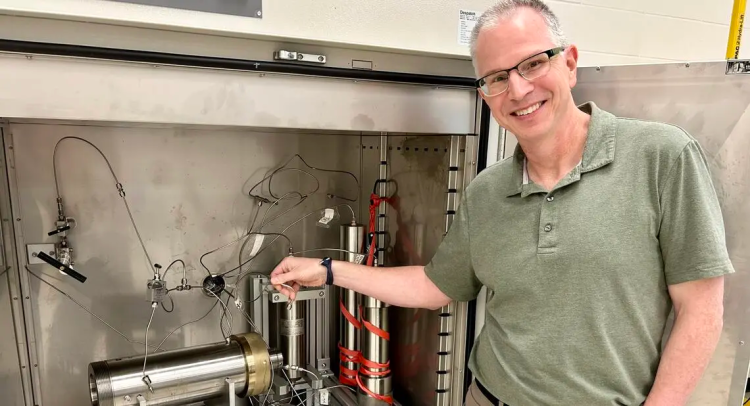A well-testing technology developed at the University of Calgary has been accepted as an option by two provinces in Western Canada.
The Alberta Energy Regulator and BC Energy Regulator have both endorsed the Diagnostic Fracture Injection Test-Flowback Analysis (DFIT-FBA) as a testing method for oil and gas wells.
"What that means is the test data can be accepted as an alternative to an existing method," says Dr. Chris Clarkson, PhD, a professor in the Department of Earth, Energy and Environment in the Faculty of Science. "That's exciting for us because I don't think it's common for a university-developed oilfield technology to get adopted by the regulator."
The test, which has been in development for about six years, could eventually be a replacement for conventional diagnostic fracture injection tests (DFITs).
New test gathers data without disrupting operational activity
DFITs are the most popular well-testing method for unconventional reservoirs to obtain minimum in-situ stress, reservoir pressure and permeability. A DFIT provides key parameters used in hydraulic fracture simulation and design, and development optimization. It involves pumping a water-based fluid into a well, creating a mini hydraulic fracture, stopping the pump, and measuring pressure data to obtain the properties of interest.
The new test developed by Clarkson and his team has made it easier.
"A conventional DFIT might take days, weeks or even months to obtain the information," he explains. "Our DFIT will obtain that same information in hours.
"That's attractive to operators as they can do the tests in a shorter timeframe and it doesn't disrupt their operations. They can do more of them and being able to do more tests means we have more data, and we can make better decisions on how to develop our resources."
Clarkson says the data is critical to understand reservoir pressure, for example, to determine how much oil or gas is in the reservoir.

Chris Clarkson, professor in the Department of Earth, Energy and Environment at the Faculty of Science, in his lab in fall 2024. Photo by Colette Derworiz
"It gives you a quantitative measure," he says. "It can also tell you if you're drilling in a location where that pressure has been depleted by another well."
Test used to evaluate induced earthquakes
The speed of the DFIT-FBA has enabled applications that were not previously thought possible, such as evaluation of induced seismicity through the identification of fault zones.
"It's a mini fracture," says Clarkson. "You're using a very small amount of fluid, so the risk of actually inducing an earthquake with our test is negligible."
The researchers have been able to identify a fault zone adjacent to a well using the method; the existence of the fault zone was verified through other data acquired by the operating company.
"Is identification of faults zones with the method repeatable?" he added. "Those are things we need to work on."
The test is also showing promise for evaluating geothermal systems and can be used for determining caprock properties critical to the containment of carbon dioxide or other gas storage.
Research in that area is still underway.
Clarkson says several companies operating in Canada are already using the test. It's also been tested in Australia, the United States and South America.
Clarkson, and his two former students, Dr. Behnam Zanganeh and Dr. Danial Zeinabady, won the 2024 ASTech Innovation in Energy Award for their work on DFIT-FBA.













